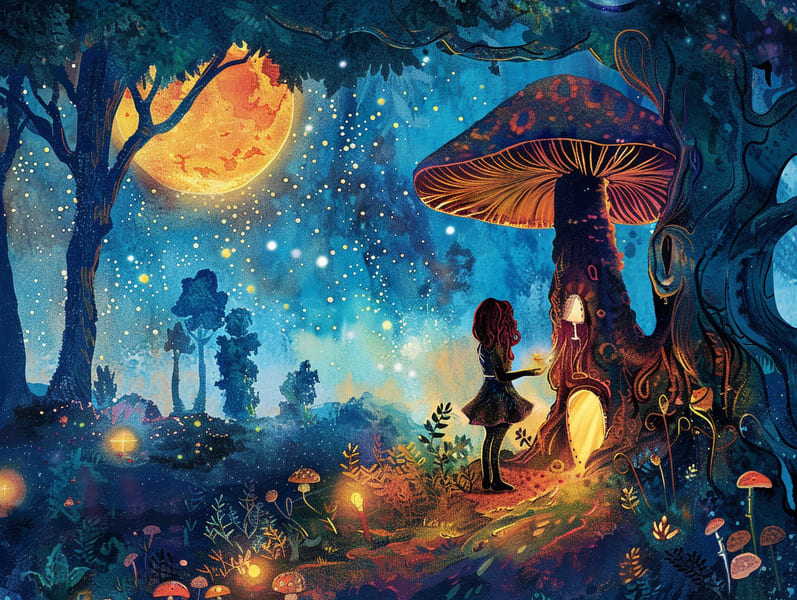Tracing the Heritage of Popular Fairy Tales and the Everlasting Charm.
Tracing the Heritage of Popular Fairy Tales and the Everlasting Charm.
Blog Article

Classic fairy tales have long histories. These narratives have been recounted from one generation to the next ages before they were ever written down. They were born from a variety of societies, including American traditions. They were initially disseminated among grown-ups, often carrying themes and messages reflective of the societal norms and beliefs of the time.
Jacob and Wilhelm Grimm, Jacob and Wilhelm, were among the first to gather many of these beloved tales. Their anthology, "Grimm's Fairy Tales," included classics like "Ashenputtel," "The Story of Hansel and Gretel," and "Snow White," which have since become cornerstones in the world of iconic fairy tales. Similarly, the Danish author's fantastical stories, such as "The Mermaid's Tale," and "The Ugly Duckling," have gained the love worldwide, ensuring their place in the pantheon of classic fairy tales.
Despite their age, traditional fairy tales remain as important as ever, especially as children's bedtime stories. These delightful tales are now available in various formats, including vividly illustrated books, delightful animations, and online fairy tales.
Their unwavering allure can be linked to several enchanting factors:
Key Lessons: Timeless fairy tales often convey important moral lessons. Fairy tales like "The Boy Who Cried Wolf" teach the importance of sincerity, while "The Tale of the Tortoise and the Hare" point out the traits of tenacity and unassuming nature. These stories offer young ones clear distinctions between right and wrong, molding their moral compass in a kind yet profound way.
Compassion and Insight: Old fairy tales frequently illustrate individuals facing obstacles and hardships, inciting young readers to understand with their struggles and back their triumphs. For instance, "Beauty and the Beast" teaches us the necessity of looking past the exterior to recognize the inner self of a individual, promoting sympathy and awareness.
Cultural Perception: Many old fairy tales are interwoven with the cultural contexts from which they sprang. Discovering these fairy tales can provide enlightening views into different historical contexts, advancing a sense of international awareness and awareness.
Inventiveness and Imagination: The enchanted elements in traditional fairy tales—enchanted forests—unleash children’s innovative ideas. These narratives lead readers to mythical realms, kindling fantastical thinking and a sense of delight that lasts a lifetime.
Ancient fairy tales are not only enchanting but also didactic. They act as whimsical tools in enhancing various mind and heart abilities in children. When classic fairy tales are spoken, they strengthen language proficiency by introducing new terms and detailed sentence structures. This practice also strengthens auditory skills and mindfulness, as young ones listen intently, anticipating to see what happens next.
Furthermore, exploring the themes and characters of ancient fairy tales can cultivate problem-solving abilities and critical thinking. Kids are taught to see patterns, foresee events, and realize cause and effect. These contemplations also assist kids say their thoughts and feelings, contributing to their emotional intelligence.
In today’s digital era, the prevalence of online fairy tales has made these tales more accessible than ever. Digital sites and web apps present comprehensive collections of children's fairy tales that can be perused or listened via anytime, anywhere. Fairy tales read out loud are particularly liked, offering an captivating way for young readers to take part in these delightful tales. Read-aloud books and narrated videos carry characters and settings to life, often enhanced by bewitching melodies and tunes that enhance the tale experience.
The unfading fascination of timeless fairy tales lies in their ability to shift to modern times while keeping hold of their basic principles. Contemporary revisions of these fairy tales often showcase more diverse characters and modern settings, making them understandable to today’s audience. However, the basic principles of daring, humanity, and honesty remain unchanged, continuing to appeal to listeners of all ages.
Traditional fairy tales also offer a sense of warmth and knowability. They extend a organized narrative with a obvious beginning, middle, and end, often winding up with the termination of conflicts and the triumph of morality over immorality. This foreseeability can be solacing for little ones, introducing a sense of firmness in an inconstant world.
Classic fairy tales continue to delight and educate new generations, maintaining their grandeur and applicability in modern society. As nighttime stories for kids, they provide a perfect blend of charm and enlightenment, enhancing moral values, empathy, and creativity. The presence of online storybooks and the well-liked nature of fairy tales voiced affirm that these classic stories remain obtainable to new generations.
By maintaining and passing on these fairy tales, we continue to cherish the rich tapestry of tradition and cultural heritage. Whether you are browsing a beautifully illustrated book, delving into a cyber library, or listening to an read-aloud story, the appeal of traditional fairy tales is always within reach. These fairy tales demonstrate of the immortal impact of storytelling and its click here ability to join us across epochs and places.
Regardless if you are seeing a gorgeously illustrated book, delving into a cyber library, or listening to an narrated book, the appeal of timeless fairy tales is always within reach.
These fairy tales demonstrate of the steadfast force of storytelling and its ability to join us across epochs and places, making a tie that captivates and teaches alike.